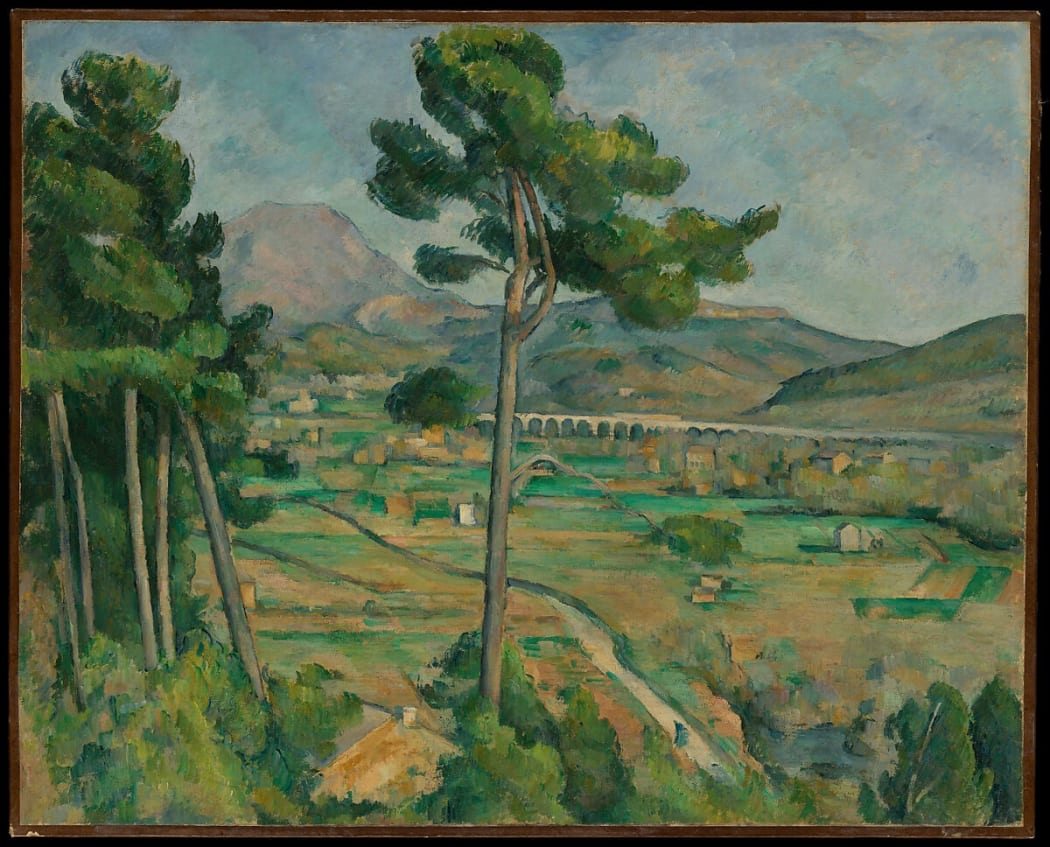
Paul Cézanne’s influence on modern art is immeasurable. Often regarded as the bridge between Impressionism and the early stages of modernism, his work embodies a philosophy of creation that transformed art from a means of representation to an act of discovery and expression. This transformative spirit aligns deeply with Aleph Contemporary’s mission: to connect timeless artistic exploration with the evolving conversation of contemporary art.
A Revolutionary Approach to Painting
Cézanne believed that art should not merely imitate nature but interpret and reveal its essence. “I want to make of Impressionism something solid and durable, like the art of museums,” he once declared. This vision led him to explore how colour, form, and perspective could be reimagined. His paintings were less about capturing a fleeting moment and more about building a structure of feeling—an enduring truth embedded in visual form.
In Cézanne’s works, we see landscapes not as static vistas but as living entities, pulsing with energy and movement. This approach invites viewers to engage with the artwork not only visually but emotionally and intellectually—a principle that resonates with Aleph Contemporary’s ethos of presenting art that challenges and enriches our perceptions.
The Act of Creation
For Cézanne, the act of painting was an intricate dance of observation, intuition, and deliberate execution. His layered brushstrokes convey a tactile understanding of his subjects, blending precision with spontaneity. This process-driven approach mirrors Aleph Contemporary’s support for artists who embrace exploration and uncertainty as part of their creative journey.
Cézanne’s refusal to conform to traditional techniques and his willingness to reimagine space, light, and perspective laid the groundwork for Cubism, Fauvism, and abstraction. His philosophy underscores the idea that art is not just a product but a dynamic process—an ever-evolving act of creation.
Cézanne’s Legacy in Modern Art
Cézanne’s innovations profoundly influenced artists like Picasso, Matisse, and Kandinsky, who carried forward his emphasis on structure and emotional resonance. This legacy extends into the realm of contemporary art, where his principles inspire experimentation, redefinition, and dialogue. Aleph Contemporary seeks to honor this lineage by showcasing works that bridge Cézanne’s pioneering spirit with the cutting-edge practices of today’s artists.
Contemporary Art and Cézanne’s Vision
In contemporary art, we see echoes of Cézanne’s philosophy in the works of artists who challenge the boundaries of medium and perception. Whether through the physicality of materials, the abstraction of forms, or the exploration of spatial relationships, the modern artist’s journey often reflects Cézanne’s belief that creation is an act of both reflection and transformation. Aleph Contemporary curates collections that celebrate these connections, fostering a space where the past and present inform one another.
Conclusion
Cézanne’s approach to painting reshaped modern art by reimagining the relationship between the artist, the medium, and the world. His philosophy of creation as a dialogue between observation and expression continues to inspire artists and viewers alike. At Aleph Contemporary, we embrace this transformative ethos, curating art that reflects the enduring power of creativity to connect, question, and inspire.
